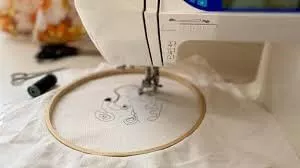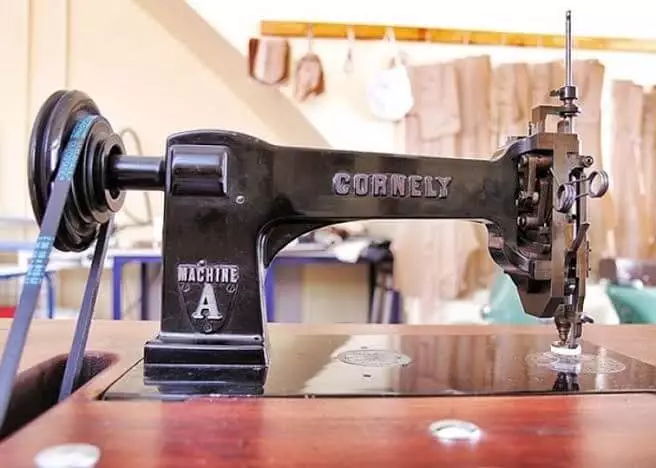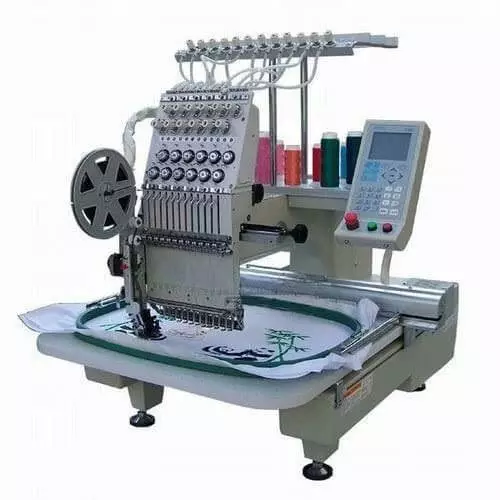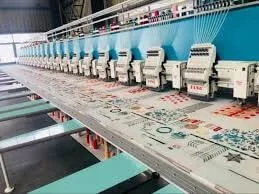Different Types of Embroidery Machines and their Functions
Introduction
By employing stitches made from silks and yarns and occasionally sequins, beads, feathers, and pearls, embroidery is a skilled method for adorning clothing by hand. Chinese embroidery dates back to the fifth century BC. One of the most renowned embroidery houses in the world today is Lesage in Paris. There are several stitching techniques used in embroidery, including running, braiding, lazy daisy, feather, blanket, and cross, as well as French knots, beading, bullion, and smocking. The essence of haute couture is this skillful workmanship; it is comparable to the difference between calligraphy that is written by hand and a typed font; its beauty is in its individuality. I present Different Types of Embroidery machines and their functions and benefits Machine Embroidery below.
Even the specialty, of it is that it can be applied before or after the construction of a garment and figured in particular areas or as part of an overall design. It can be used as an ornamentation on the surface of the fabric to aesthetically improve the look of the fabric or it can be used in a way that makes it a part to the function of the apparel, rather than only as a decorative addition. For example, with the application of smocking, a buttonhole can be created with various creative stitch work and the shape of a simple garment can altered. Embroidery can be done with a machine or hand. In this article various types of embroidery machines and their functions.
Functions of Different Types of Embroidery Machines
1. Mechanical Embroidery Machine
This kind of embroidery machine is simply a type of sewing device that works in the same manner as a home sewing machine. However, instead of attaching fabric together with an actual needle and thread, these machines use needles for piercing fabric material. These machines simply keep on pulling the extended threads through the holes in order to form embroidered designs on the fabric. In many cases, it is also found that these machines can also be used as regular sewing machines.
The feature of this is that it has a distinct design that is unique from regular and industrial sewing machines. It usually doesn’t have a needle plate. Here, simply the flat piece of metal is located on top of the bobbin case, which holds the thread in place for baby lock embroidery. If you find any mechanical embroidery machines, one can easily see lots of holes spread across the entire surface area of the sewing bed. Depending on how large or small your machine’s hoop/quilt frame is, the holes could be evenly spaced or irregularly patterned.

2. Free-motion Machine Embroidery
An ordinary zigzag sewing machine is used to create stitched designs in free-motion machine embroidery. This type of machine lacks the automated capabilities of a specialized machine because it is used mostly for tailoring. Helen Blanchard was the first to obtain a patent for a zigzag sewing machine. Free-motion machine embroidery is produced when the embroiderer maneuvers densely woven fabric under the needle while operating the machine. The machine’s “feed dogs” or teeth are covered or lowered, and the fabric is moved manually by the embroiderer. The embroidery is created manually by the embroiderer using the running stitch and more elaborate built-in stitch settings on the machine. The zigzag stitch on a machine can be used to add a border or thicker lines to a pattern. Free-motion machine embroidery is a human technique rather than a digital replication, therefore unlike computerized embroidery, any pattern made using this method is unique and cannot be precisely duplicated.
3. Cornely hand-guided Embroidery

This particular embroidery has assumed the name of the Cornely machine. It was manufactured in the 19th century to replicate the Beauvais stitch (chain stitch), It is still used today, especially in the fashion and apparel industry. Cornely embroidery is simply a hand-guided embroidery. The operator can easily direct his machine according to the pattern. Here, the fabric is located by a crank located under the machine. This machine has a universal drive system controlled by a handle. Some models can embroider sequins, cords, braids, etc. Classic straight stitches are being performed by these cornely machines.
4. Computer-controlled embroidery machines
Modern embroidery machines are primarily computer-controlled and made just for embroidery. Here, it is found that the frames used by embroidery machines basically grip a framed section of cloth taut below the sewing needle and then carry it automatically to create a preprogrammed design that is saved in the machine. In accordance with its capabilities, it requires various user inputs in a preset digital format in order to create the embroidery designs. In industrial embroidery machines, it has been seen that several needles require threading before the design is run, but rethreading is not necessary.
4.1 Single-head embroidery machine

A single-head embroidery machine simply has one embroidery head, therefore it’s straightforward. The embroidery arm moves in accordance with the digitized pattern while the embroidery head remains stationary. If you’re a beginner, a single-head embroidery machine is ideal. It’s ideal if you’re seeking to break into the field and embroider fabric on a large scale. For decorations in a mixed media and multimedia style, single-head machines are best. Not to mention that they are adaptable (7–15 sewing needles altogether), have fast embroidery speeds (300–1000 stitches per minute), and can be small and portable, which is perfect if you have a little room.
4.2 Multi-head embroidery machine

The factories that are producing the bulk orders, can opt for multi-head embroidery machines. Because of the feature that it has many sewing heads, it can embroider the same pattern in a high volume. Excellent effectiveness and excellent quality have become a reality. A machine with numerous heads offers two to twelve heads. You can have up to 15 needles with each head. Each one has the capacity to hold a distinct hue. Therefore, using this machine at rates of up to 1100 rpm will enable you to easily embroider a pattern with multiple colors onto a number of products at once, such as a bulk order of hats, all without having to stop.
A machine with many heads has the capacity for numerous heads and up to 15 different color needles per head. You can select your thread colors once the cloth has been hooped, put into place, and your design has been digitally combined.
4.3 Schiffli embroidery machine
Multi-need embroidery machines are employed in the production of Schiffli items. The material to be embroidered is inserted vertically into the Schiffli machines, which is a distinguishing feature purely via the device. The needles’ horizontal entry into the fabric leads to the development of the stitch. The needles are lined up in a straight line and simultaneously pierce the fabric at the same height. The clamped fabric’s horizontal and vertical movement is what creates the embroidered pattern. Two fabrics can be embroidered concurrently using modern high-performance embroidery machines. Each needle can be individually operated in Schiffli machines, which enables the possibility of a color shift within the stitching.
Depending on the machine, up to 2,200 needles can be inserted into the fabric at once. The fabric is fastened in the frame beneath the frame to endure this mechanical stress and high anxiety. Although the length of the cloth to be embroidered varies depending on the machine, the fundamental difference between different Schiffli machines is that the fabric can be clamped into the frame as either continuous yardage or cut coupons with predetermined lengths.
3. Benefits of Machine Embroidery
1. User friendly
Because of the fact that The utilization of the computerized embroidery machine is easier, making it fairly user-friendly. The device efficiently completes all required tasks. But sometimes, operating these machines virtually requires some of the experience or highly developed skill sets.
2. Reliable speed
As these kinds of computerized embroidery machines are the latest innovations in the field of types of machinery, they are faster in comparison to electrical sewing machines. For sewing different kinds of patterns, the photographs and pictures must be converted into digital format.
3. Additional stitching features
With the latest features of the computerized embroidery machines, the complex patterns can be stitched. As per the buyer’s requirement, any kind of design can be digitalized and created into stitching patterns.
4. Accurate
The majority of the public and manufacturers, prefer using computerized machinery to duplicate flawless designs. These devices are capable enough of accurately and flawlessly following work instructions.
5. Patterns built-in
These kinds of computerized devices have different patterns that are built-in and can be customized. These patterns are also simple to tweak and personalize in order to create patterns of one’s own choosing.
Conclusion
Stitching a design into fabric is part of the machine embroidery process, often known as computer embroidery. The pattern is preset by uploading a design to the machine’s software. Computerized embroidery machines are specialized machines that can create embroidery from computer-generated designs. For the huge production market, the home market, and the small independent professional, such gadgets are readily available. Embroidery machines are used to stitch onto the materials, not to make your outfits. They are used to create branded workplace, athletic wear, and numerous other types of personalized clothing. Because they are unable to generate clothing themselves, they are not used to combine materials to construct complete garments.
5. References
- 1. Blanchard, Helen A. Improvement in Sewing Machines. Helen A. Blanchard, assignee. Patent US141987. 19 August 1873. Print.
- 2. Types of Embroidery Machines | 3 Most Common Types You Must Know, July 12, 2023 / By Glyn Ann
- 3. Embroidery File Formats Supported by Embird Embroidery Software”. www.embird.net. Retrieved 30 May 2013
- 4. https://midwestworld.com/choosing-the-right-single-head-machine-for-your-business-2/
- 5. Benefits of Using Computerized Embroidery Machines, 8 MAY 2012
- https://www.mynewsdesk.com/in/indiamart/pressreleases/benefits-of-using-computerized-embroidery-machines-757532
- 6. https://midwestworld.com/upgrading-to-a-multi-head-embroidery-machine-for-your-business
- You may love to read: How to Choose an Embroidery Machine
- 2 Major Types of Embroidery Machines & Benefits of Buying Wholesale
- Different Types of Embroidery Used in the Clothing Industry
- 12 Types of Embroidery Defects Found in Garments Industry
